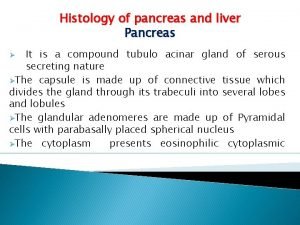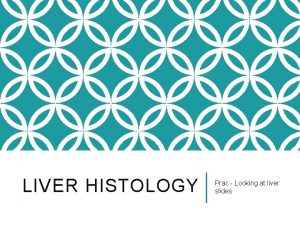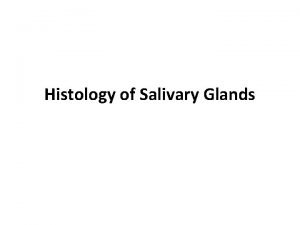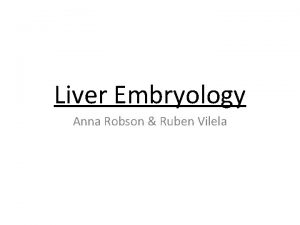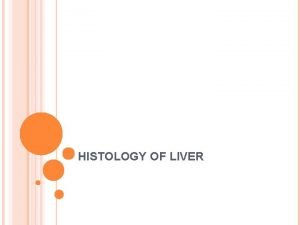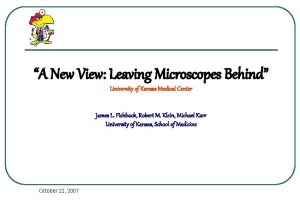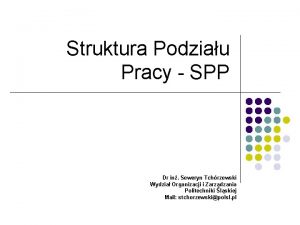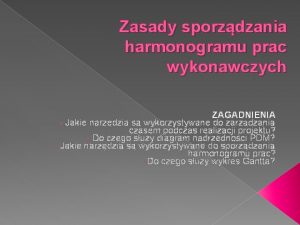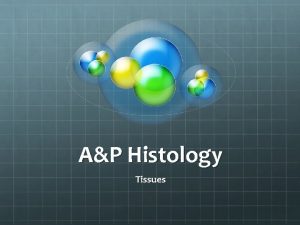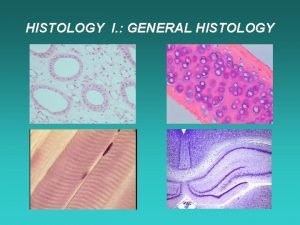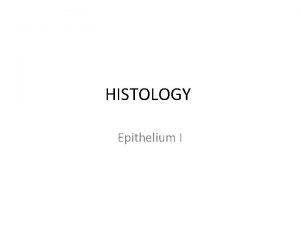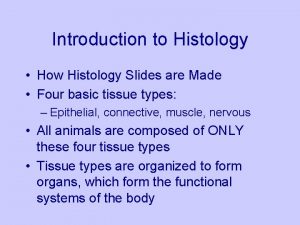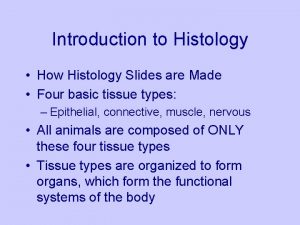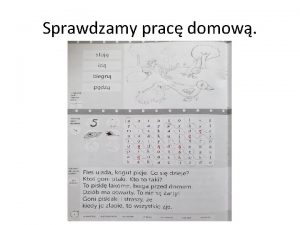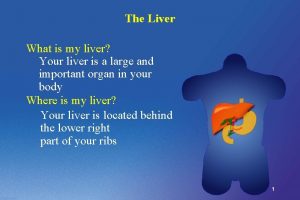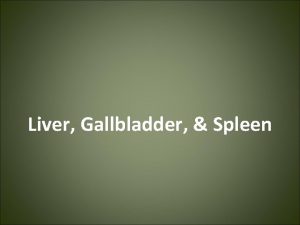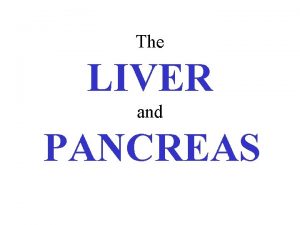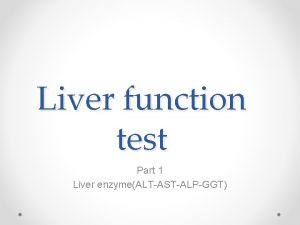LIVER HISTOLOGY Prac Looking at liver slides STARTER


















![LOW POWER DRAWING MARK SCHEME [10] Annotations [3] Whilst a label might be the LOW POWER DRAWING MARK SCHEME [10] Annotations [3] Whilst a label might be the](https://slidetodoc.com/presentation_image_h2/125f26938ab2f93f67eec7e1ad8796ed/image-19.jpg)



- Slides: 22

LIVER HISTOLOGY Prac - Looking at liver slides

STARTER: Review your FLIP learning, discuss what you learnt with the person next to you

Learning Objective • Know about liver structure Success Criteria (i) the structure and functions of the mammalian liver - To include the gross structure and histology of the liver (ii) the examination and drawing of stained sections to show the histology of liver tissue

TERMS NEVER TO CONFUSE!! �Excretion versus egestion �Metabolic waste – substances produced from chemical reaction that may be toxic at high levels in the body Carbon dioxide Nitrogenous waste (urea)

A diagram showing the positions of the main excretory organs

Liver Gallbladder Pancreas

Week 5 The liver and its connections to the blood system

Blood supply to liver Hepatic artery – supplies oxygenated blood from heart – providing good supply of oxygen Hepatic vein – takes deoxygenated blood away from liver Hepatic portal vein – bring blood from small intestine rich in the products of digestion (meaning harmful substances can be filtered out and broken down immediately) Bile duct takes bile made in liver to gall bladder for storage

LIVER

LIVER BASICS Lies to the right side of body just under diaphragm Largest internal organ- holds 13% total blood at any one time- can store & release blood acting as a reservoir to compensate for smaller changes in blood volume Uses up to 20% total energy in body Made of left & right lobes enclosed by fibrous capsule (Glissons Capsule) Each lobe formed from hexagonal lobules (100, 000) Dual blood supply: receives blood from 2 blood vessels

LIVER LOBULES Inter-lobular vessel Liver lobule Intra-lobular vessel

HEPATOCYTES Make up roughly 80% of the mass of the liver Nuclei are distinctly round, most single nucleus, some binucleate cells. Hepatocytes are exceptionally active in synthesis of protein and lipids for export therefore have large quantities of both rough and smooth endoplasmic reticulum and Golgi membranes. Glycogen granules and vesicles containing very low density lipoproteins are readily observed.


The arrangement of liver cells into cylindrical lobules Blood moves from outside of lobule from HPV and HA HV Blood from HPV and HA mix and enter channels called SINUSOIDS Hepatocytes lining the SINUSOIDS absorb products in blood and secrete products into the blood as it flows over them. Interlobular vessels (triad)

The arrangement of liver cells in a lobule © Pearson Education Ltd 2009 This document may have been altered from the original

LIVER CELLS Direction of blood outside inside lobule through sinusoids Kupffer cells in SINUSOID: phagocytic cells (derived from monocytes). Ingest bacteria from blood. Breakdown and recycle old red blood cells, bilirubin (product of haemoglobin breakdown) is one of the pigments in bile. Hepatocytes have microvilli (increase surface area of liver cells: x 6). Many metabolic functions: • protein synthesis, formation of glycogen, synthesis of cholesterol and bile salts, detoxification

BILE CANALICULUS Hepatocytes separated by second channel: bile cannuli Hepatocytes close to bile cannuli rich in Golgi vessels reflecting transport of bile constituents into the channels Transfers fluid inside outside of lobule Contents drained into hepatic bile duct: continuous with the common bile duct, which delivers bile into the duodenum, diverting through the gall bladder Drains up to 1 litre per day

KEY SKILL: DRAWING MICROSCOPE SLIDES Looking at liver slides
![LOW POWER DRAWING MARK SCHEME 10 Annotations 3 Whilst a label might be the LOW POWER DRAWING MARK SCHEME [10] Annotations [3] Whilst a label might be the](https://slidetodoc.com/presentation_image_h2/125f26938ab2f93f67eec7e1ad8796ed/image-19.jpg)
LOW POWER DRAWING MARK SCHEME [10] Annotations [3] Whilst a label might be the name of a tissue, an annotation adds a descriptive quality such as shape, size or colour. Drawings from a microscope [7] Single, clear lines drawn with a sharp pencil. No shading or colour on the diagram. Informative title to be included. Scale included (e. g. high power, low power, x 80, x 10) to show approximate magnification. Low power tissue plans may not include cells. Tissues should be in correct proportions. Label lines drawn in pencil using a ruler.

PLENARY: PPQ


MARKSCHEME
 Looking out looking in
Looking out looking in Looking out looking in chapter 9
Looking out looking in chapter 9 Histology of liver and pancreas
Histology of liver and pancreas Liver histology slide
Liver histology slide Liver histology
Liver histology Liver histology
Liver histology Bare area liver
Bare area liver Acinus liver
Acinus liver Histology of liver
Histology of liver Ku medical center histology slides
Ku medical center histology slides Anatomy histology slides
Anatomy histology slides Syzyfowe prace jako gatunek literacki
Syzyfowe prace jako gatunek literacki Struktura podziału pracy budowa
Struktura podziału pracy budowa Zasoby niezbędne do realizacji projektu
Zasoby niezbędne do realizacji projektu Zasada prac przygotowanych belka
Zasada prac przygotowanych belka Współczynnik wypełnienia naczepy
Współczynnik wypełnienia naczepy Zasady sporządzania harmonogramu prac wykonawczych
Zasady sporządzania harmonogramu prac wykonawczych Prac skills
Prac skills A small child slides down the four frictionless slides
A small child slides down the four frictionless slides A crane lowers a girder into place
A crane lowers a girder into place Starter task
Starter task Mathsbot starter
Mathsbot starter Honor show chow poultry starter
Honor show chow poultry starter


